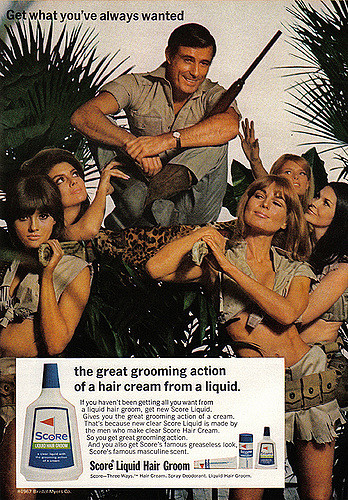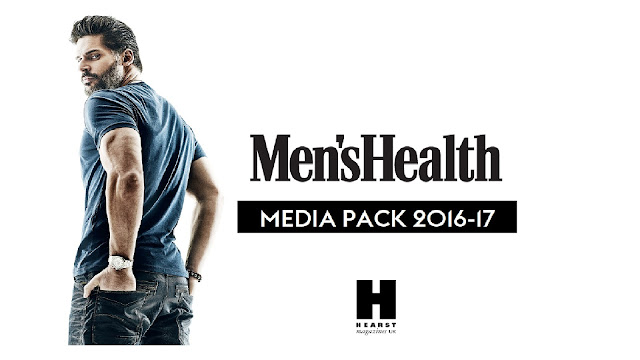Men's Health - Representation
Read these extracts from the journal article exploring the representation of masculinity in Men's Health magazine and answer the following questions:
1) Why is Men's Health defined as a 'lifestyle magazine'?
It's defined as a lifestyle magazine because as well as having articles on health and wellbeing, they also take care to include other 'lifestyle' topics such as mental health and fashion.
2) Why is advertising significant in helping to shape masculine identity?
Advertising is significant in helping to shape masculine identity because it subconsciously informs the male audience on what clothes they should wear, what products they should use, and what their bodies need to look like in order to be attractive and be considered manly. Therefore, advertising contributes to the publishing company’s personality and is significant in creating specific identities- “advertisement serves not so much to advertise products as to promote consumption as a way of life. It educates the masses into an unappeasable appetite not only for goods but for new experiences and personal fulfilment” (Christopher Lasch 1991)
3) The article suggests that the representation of masculinity in Men's Health is not fixed or natural and is subject to constant change. What media theorists that we have studied previously can be linked to these ideas?
Judith Butler- 'Gender roles are a performance'
Showing that masculinity is constructed since the moment we are born (boys are associated with blue, girls with pink)
David Gauntlett- “The mass media has become more liberal, and considerably more challenging to traditional standards… and this has been a reflection of changing attitudes, but also involves the media actively disseminating modern values."
The definition of masculinity is a reflection of societies attitudes and views in that particular time period.
David Gauntlett- Masculinity in crisis
Gauntlett is against the idea that masculinity is in crisis and suggests that many modern representations of masculinity are about "men finding a place for themselves in the modern world"(2002)
Stuart Hall- media construction & constructing our own identity
The media has an extremely important role in constructing masculinity and what is expected of a man. However, new technology has allowed individuals to create and share their own content, meaning they are able to construct their own identities and subvert traditional stereotypes. For example, there are now many male makeup artists on YouTube and Instagram.
Gelfer- Changing masculinity in advertising
Suggested that the way masculinity is represented in advertising is changing and showed this through the 5 stages of masculinity.
4) What does the article suggest Men's Health encourages its readers to be? What examples and statistics are provided to develop the idea of men as consumers?
The article suggests that Men's Health encourages its readers to have a muscular athletic body. This is achieved through the metaphor of bodies and the importance that the male physique is given in the publication.
The idea of men as consumers arises from the fact that they are a profitable target. An illustrative example of this trend is men’s increasing interest in fashion and personal products, as proved in a research conducted by Euromonitor International which shows that “the global market for male grooming products grew by an impressive average annual rate of 5.7% between 1997-2005”
5) What representations of the male body can be found in Men's Health?
Men's Health promotes the notion that the male body is an object that is expected to be sculpted to perfection. This is achieved through the many images of shirtless men with muscular physiques placed strategically throughout the whole magazine and the constant cover lines regarding 'losing weight' and 'building muscle'. Although Men's Health may be trying to encourage men to strive towards this healthy, attractive lifestyle, it may unintentionally result in many men becoming insecure and subconscious about how they look.
6) What does the article suggest regarding the objectification of men?
The article suggests that men have become, not only instrumentalized, but also "unapologetically objectified, both in terms of erotic spectacle and as targets of advertising for products beyond cars and beer, including many items once thought to be marketed for women alone” (MacKinnon, 2003) This leaves them exposed to the reader's gaze the same way women had been treated many years prior.
7) What is 'metrosexuality' and how can it be applied to Men's Health?
Metrosexuality is a term first defined by Mark Simpson in an article called “Here come the mirror men” (1994) that refers to a man who is extremely aware of his physical appearance and is devoted to it by buying cosmetic and fashion products. The metrosexual male is usually young with high income to spend.
8) What representation of men in Men's Health is discussed in the section 'Homogenous bodies'?
This section of the article discusses the ironic way in which men are depicted in Men's Health. The magazine consistently focuses on the anatomy of the male, stressing male physical features, as to ensure the heterosexuality of its readers. However, at the same time, the readers are presented with suggestive images of men, sexually objectified as women.
9) What are the conclusions drawn by the article with regards to the representation of masculinity in Men's Health?
The article draws two conclusions. Firstly, it concludes that Men's Health is one of the only men's magazine that promotes a contemporary and unique representations of men (ie. the idea that men can have mental illnesses, be insecure and be a metrosexual)
The second conclusion drawn out by the article is the fact that Men's Health is extremely good at being a mentor/donor for its audience in terms of Health and fitness. It offers reliable advice, based on scientific and technical evidence that helps men shape the only thing that they are in control of- their body.
10) What is your own view of the representation of masculinity in Men's Health? Is it a positive representation that encourages men to the best they can be or is it a hypermasculine, consumer-driven representation designed to undermine men's confidence and objectify their bodies?
On one hand, I think that the representation of masculinity in Men's Health is a positive one- it encourages men to be in the best shape they can be and provides examples of men who have accomplished amazing things, therefore motivating its readers to do the same. It also provides its readers with the newest technology and fashion, allowing them to keep up with their appearance (something the readers of MH take very seriously.)
However, on the other hand, we must not lose sight of the fact that MH is a publisher, and the aim of a publisher is to make a profit from producing and selling content. Therefore, the content they place in their magazine is purely chosen because of the fact that this is what men are interested to see in our current period and it is what will get them the most views.



Snovitra 10 is an oral remedy that helps manage the problem of Erectile Dysfunction in men. The medicine comes with an active substance of Vardenafil 10mg.
ReplyDeleteCenforce is a prescription medication used to treat erectile dysfunction. It contains sildenafil, which helps relax blood vessels and increase blood flow to the penis, aiding in achieving a firm erection.
ReplyDeleteCENFORCE 150 MG
This is really nice information you posted, It's very informative and definitely, will be helpful for those who are looking for men's mental health services. To know more about visit Cognitive Clarity
ReplyDeleteMet Kamagra Oral Jelly Bestellen Deutschland krijg je een snelle en effectieve oplossing voor erectieproblemen. Het gelvormige medicijn werkt binnen enkele minuten en is makkelijk in te nemen. Dankzij de handige sachets kun je het eenvoudig meenemen en gebruiken wanneer nodig. Bestel Kamagra Oral Jelly online en ontvang een snelle, discrete levering in Nederland. Ervaar de voordelen van Kamagra Oral Jelly bestellen Nederland.
ReplyDeleteBuy Snovitra 10 Tablets - Higher Pleasure, Naturally ❤️
ReplyDeleteCenforce 100mg kopen in Nederland is eenvoudig en veilig. Dit medicijn combineert sildenafil en dapoxetine om erectiestoornissen en voortijdige ejaculatie effectief te behandelen. Veel mannen ervaren snelle en langdurige resultaten. Cenforce 100mg is online zonder recept verkrijgbaar en wordt discreet thuisbezorgd. Let erop dat je alleen bij betrouwbare apotheken bestelt voor kwaliteit en veiligheid. Verbeter je seksuele prestaties vandaag nog met Tadalafil 20 mg!
ReplyDeleteCenforce 100mg Kaufen in Deutschland